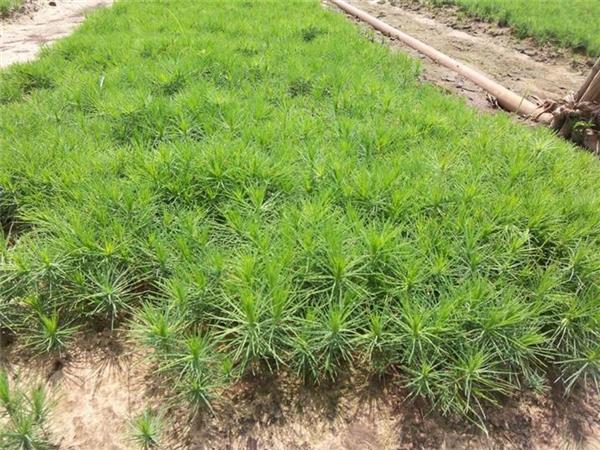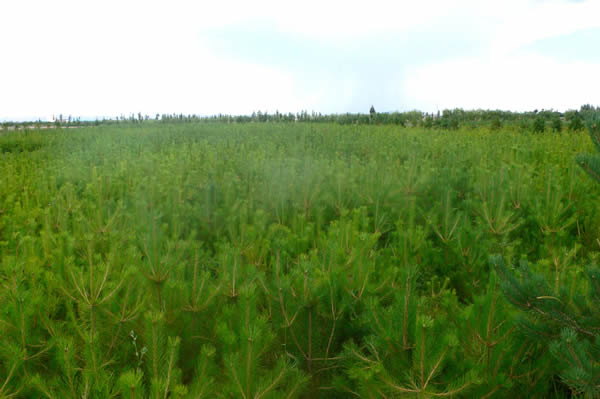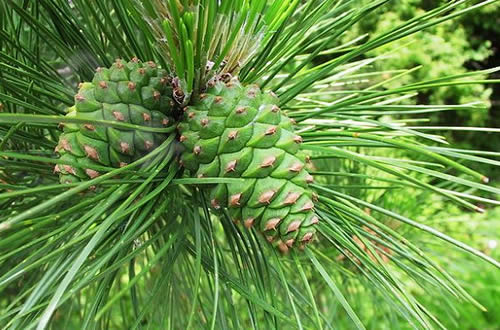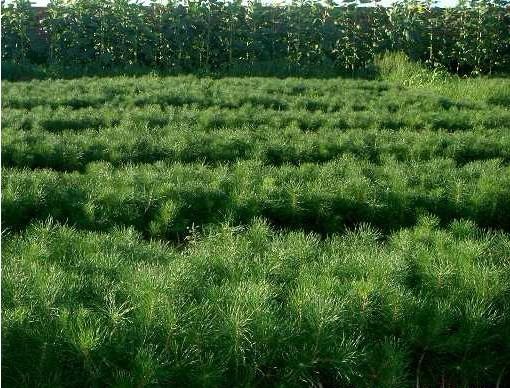What are the planting management and maintenance measures of Pinus tabulaeformis seedlings
The ornamental value of Pinus tabulaeformis is relatively high, and it also has economic value, so on the whole, it is a more suitable tree species to be planted, whether it is planted in large quantities to obtain economic profits, or a small amount of planting is used to decorate the courtyard.

Sowing Management of Pinus tabulaeformis seedlings
Soil selection: choose neutral sandy loam or loam with flat terrain, convenient irrigation, good drainage, deep and fertile soil layer (pH 6.5-7.0) as nursery land. The former crops such as Pinus tabulaeformis, oak, poplar, willow, Amorpha and other coniferous species should be selected as nursery land, and the newly reclaimed wasteland can also be used to raise seedlings, so as to avoid raising seedlings on previous crops such as Robinia pseudoacacia, elm, Junqianzi and vegetable stubble such as cabbage and potato.
Soil preparation: the soil must be prepared before raising seedlings. Nursery soil preparation in autumn is suitable for deep ploughing, depth in 20cm~30cm, do not rake after deep ploughing. After the soil was thawed in the spring of the following year, 40000kg~50000kg, green manure, barnyard manure and other mature organic manure were applied per hectare, and calcium superphosphate 300kg~375kg was applied. Shallow ploughing again, depth in 15cm~20cm, then rake flat.
Sowing: soil disinfection should be carried out before sowing. The seeds should be disinfected with formalin or potassium permanganate before sowing. Soak the seeds in 0.5% formalin solution for 15 min~30 min, remove them, seal for 2 hours, rinse with clean water, dilute and dry the seeds.
Irrigation: try to avoid topsoil dryness after sowing, especially in the north, where some small seeds cover the soil shallower after sowing and are vulnerable to spring drought. Through reasonable irrigation to keep the bed moist, prevent the seedlings from losing water, adjust the surface temperature and prevent sunburn. It is generally required to irrigate more times and less each time.

Irrigation techniques of Pinus tabulaeformis seedlings during Management period
Cutting, pressing and burying seedlings: these seedlings need more water for rooting and sprouting, especially at the stage of spreading leaves but not fully rooting (that is, false active period), the leaf transpiration is larger and the soil water supply is less. once the water is cut off, it will cause plant death, and timely irrigation is the key. In the north, more attention should be paid to the dry season. The amount of irrigation can be appropriately larger, but the flow should be fine and slow, so as to avoid the impulse of the flow to move Pinus tabulaeformis seedlings (especially the seedlings).
Split seedlings and transplant seedlings: due to the root injury during planting, the internal water supply of Pinus tabulaeformis seedlings is unbalanced, so the water supply must be strengthened. It should be irrigated three or four times continuously after ramet and transplant, the amount of irrigation should be larger, and the interval should not be too long.
Grafted seedlings: grafted seedlings do not have a great demand for water, as long as they can ensure the normal life activities of the rootstocks. There should not be too much water, especially at the interface, otherwise the wound will rot. Be careful when you have to irrigate in dry weather.

Main cold prevention measures of Pinus tabulaeformis seedlings in winter
1. The furrow (or bed trail) is ploughed into a deep trench, and the ploughed soil is covered on both sides of the ridge (bed). Before freezing, the soil is irrigated on the side of the ridge (bed) to make Pinus tabulaeformis seedlings and soil maintain sufficient water, so as to meet the small amount of water consumption of Pinus tabulaeformis seedlings during overwintering, and avoid and reduce the phenomenon of physiological drought.
two。 Coating white against cold has a certain effect on overwintering cold prevention of Pinus tabulaeformis seedlings. The specific method is to prepare 1 ∶ 1.5 Bordeaux liquid with increased lime content and paste emulsion, and spray Pinus tabulaeformis seedlings. The spraying time is about before the soil freezes. In the whole winter, the appearance of Pinus tabulaeformis seedlings is grayish white, which can not only reflect sunlight, prevent sharp temperature changes, but also plug leaf stomata, inhibit transpiration, protect seedlings and prevent diseases.
3. For evergreen coniferous seedlings or some precious tree species and newly introduced broad-leaved tree seedlings, when their growth is weak, barriers can be taken to prevent cold. In cold-proof areas and pseudo-planting areas, a cold barrier should be sandwiched with whole bundles of straw every 20 to 25 meters. The cold barrier should be removed twice in 3 ~ 5 days before spring seedling, and it should not be withdrawn too early.

Because Pinus tabulaeformis itself is an evergreen tree species, its planting and maintenance methods are relatively simple, if there are friends who want to plant some tree species that are easy to feed in the courtyard, Pinus tabulaeformis will be a good choice.
Related
- Wuhan Hospital Iron Tree Blooming Result Was Instantly Frightened by the Gardener Master
- Which variety of camellia is the most fragrant and best? Which one do you like best?
- What is the small blue coat, the breeding methods and matters needing attention of the succulent plant
- Dormancy time and maintenance management of succulent plants during dormancy
- Minas succulent how to raise, Minas succulent plant pictures
- What are the varieties of winter succulent plants
- How to raise succulent plants in twelve rolls? let's take a look at some experience of breeding twelve rolls.
- Attention should be paid to water control for succulent plants during dormant period (winter and summer)
- Watering experience of twelve rolls of succulent plants
- Techniques for fertilizing succulent plants. An article will let you know how to fertilize succulent plants.



